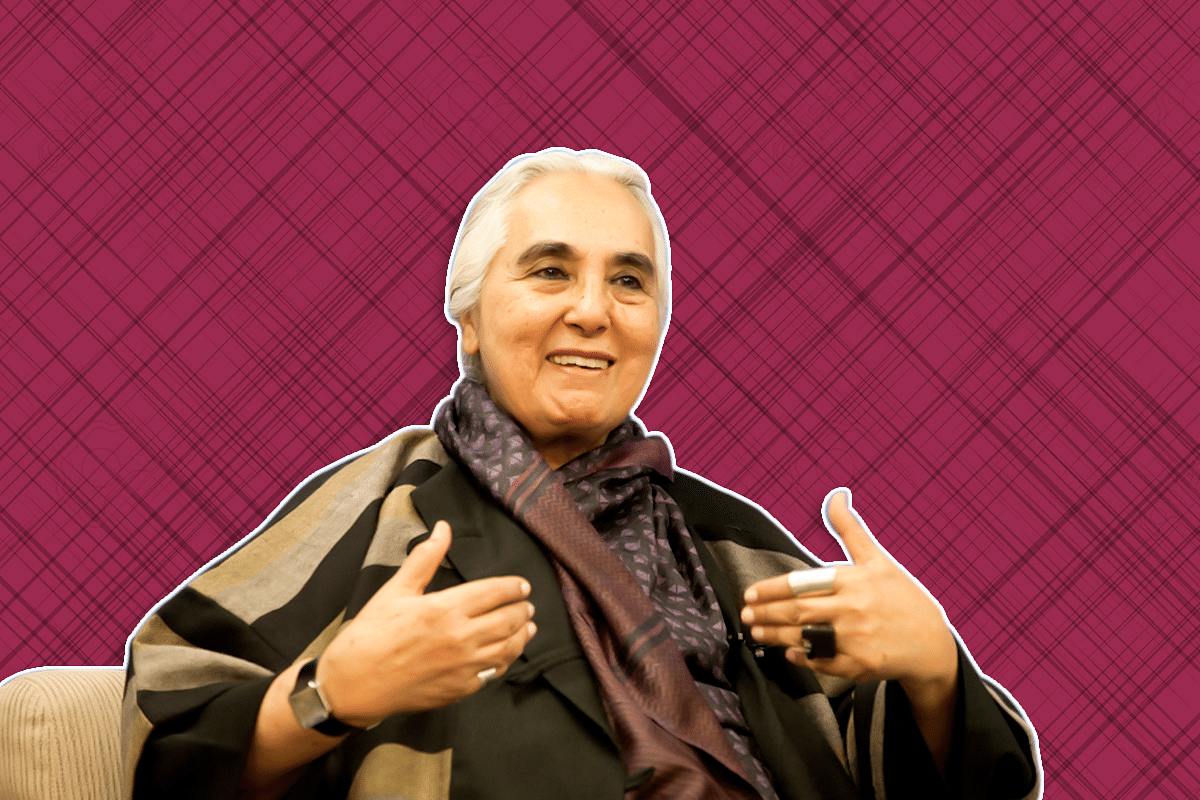Ideas
Beyond The Ashoka-Yudhishthira Gaffe Of Romila Thapar
- The core of their argument isn’t about when Ashoka and Yudhishthira lived, but that the virtues of the latter, as described in the Mahabharata, have been usurped from non-Hindu sources.

Indian historian Romila Thapar.
Recently, a short video clip of Romila Thapar went viral. In this, she talks about the Mauryan emperor Ashoka.
In the video clip Prof. Thapar is heard saying that ‘Yudhishstra’’s remorse at the fratricidal war, according to some historians, could have been inspired by Ashoka’s remorse after the Kalinga war.
Naturally, Hindu Twitterati has reacted strongly to this clip, with reactions ranging from anger to sarcasm.
Essentially, the reactions are based on the fact that Mahabharata events happened long before the period of Ashoka (304 to 232 BCE).
Many seasoned historians like Dr B B Lal and the late Prof. S P Gupta, considering a holistic look at the literary sources, epigraphy and archaeology, generally consider the core events of Mahabharata to have happened around 1200 (+/- 200 years) BCE.
Those who go by the astronomical data gleaned from the epic itself usually take the dates to be around 3100 BCE, which in turn go well with the traditional dates of the start of Kaliyuga mentioned in the fifth century Gupta and seventh century Chalukya (Aihole) inscriptions.
But, the real contention here is the composition of Mahabharata itself.
Even historian R C Majumdar is of the opinion that the standardisation of the text in the present form happened around fourth century CE.
It was not some new radical discovery. Prof. S P Gupta, one of the finest archaeologists and a great scholar, wrote in his introduction to ‘Mahabharata: Myth and Reality’:
While there are scholarly discussions on the accepted fact that Mahabharata is a layered text, what has been happening with a group of historians right from the days of colonial era to Romila Thapar, is that all the positive and good elements in such layered texts have been attributed to Buddhist or Jain influence.
So, when she states on the sly that Ashoka’s remorse at the war cruelty could have been the source for Yudhishthira feeling the same, as suggested by some historians, she is essentially floating an idea that has already been getting forged in the Indological crucibles guarded within the castles of academia.
To understand the kind of narrative that goes behind the dissection of Mahabharata, just consider the following passage from an academic study of the epic - with primarily Western sources:
This is the academic kernel of which Thapar’s seemingly innocuous, suave utterance is only an interface - a subliminal preparation.
Soon, a rhetorical Marxist would emphatically assert that the remorse of Yudhishthira and the hesitation of Arjuna were Brahminical fabrications to appropriate and devalue Ashoka’s great remorse and conversion.
How does one counter this?
Mahabharata is a layered text and many Indologists have suggested that the standardisation of the text continued well into fourth century CE.
So, the Bhagavad Gita, Shanti Parva etc., are conveniently pushed into either the post-Ashokan or even post-Common Era. This makes it easier to allege that they are appropriations of Buddhism or were influenced by Buddhist and Jain sources.
One should remember that the same tactics have been used in the case of Tamil literature. Here, it is argued that the high ethics in Thirukkural were a departure from the Sangham era and hence should have come from Jain influence.
This, despite the fact that Thiruvalluvar mentions Hindu deities, and advocates the king removing the evil ones ‘like weed’ (no Ahimsa) and speaks high of ‘birth based virtue’ of Brahmins.
The answer to Thapar is not proving that Yudhishthira lived before Ashoka. It should be established rather that some crucial portions like Bhagavad Gita and Bhishma’s advice to Yudhishthira were part of the epic before Ashoka.
Dr Priyanka Pandey, an upcoming Sanskrit scholar from JNU in her recent work on Shanti Parva points out in a detailed manner that the composition of the Mahabarata was done before the spread of Buddhism. She also says that the texts including Bhagavad Gita (and hence Arjuna's hesitation in the battle field) predated Ashoka by at least two centuries. Dr Pandey writes:
So there is every possibility that Ashoka could have been influenced by the narrative of Yudhishthira and not the other way round.
So, do get outraged at Romila Thapar’s remark, but even as you do, remember that she points to more dangerous attacks and stereotypes getting prepared against the Hindus in the academia.
Support Swarajya's 50 Ground Reports Project & Sponsor A Story
Every general election Swarajya does a 50 ground reports project.
Aimed only at serious readers and those who appreciate the nuances of political undercurrents, the project provides a sense of India's electoral landscape. As you know, these reports are produced after considerable investment of travel, time and effort on the ground.
This time too we've kicked off the project in style and have covered over 30 constituencies already. If you're someone who appreciates such work and have enjoyed our coverage please consider sponsoring a ground report for just Rs 2999 to Rs 19,999 - it goes a long way in helping us produce more quality reportage.
You can also back this project by becoming a subscriber for as little as Rs 999 - so do click on this links and choose a plan that suits you and back us.
Click below to contribute.
Latest